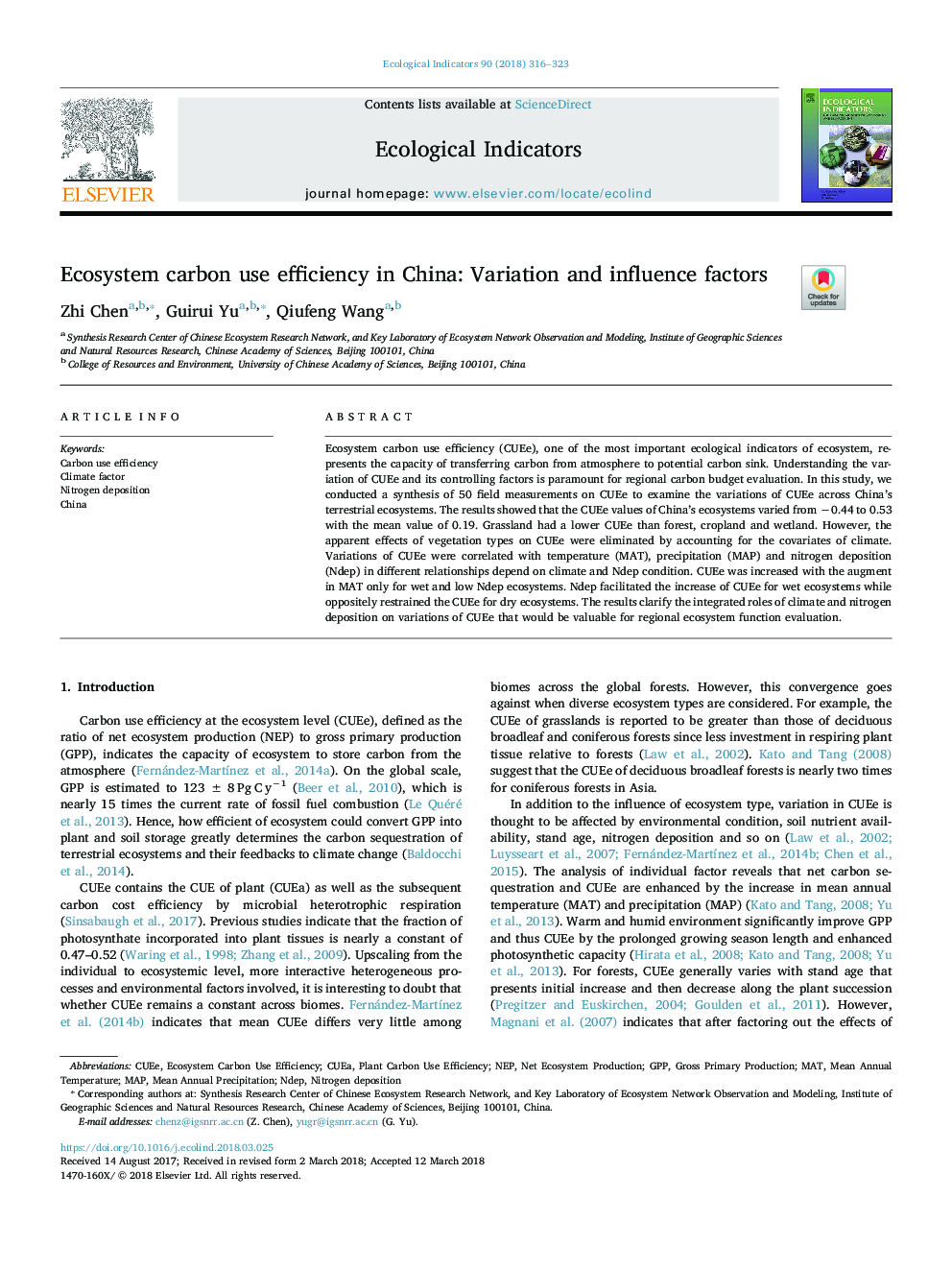| Article ID | Journal | Published Year | Pages | File Type |
|---|---|---|---|---|
| 8845419 | Ecological Indicators | 2018 | 8 Pages |
Abstract
Ecosystem carbon use efficiency (CUEe), one of the most important ecological indicators of ecosystem, represents the capacity of transferring carbon from atmosphere to potential carbon sink. Understanding the variation of CUEe and its controlling factors is paramount for regional carbon budget evaluation. In this study, we conducted a synthesis of 50 field measurements on CUEe to examine the variations of CUEe across China's terrestrial ecosystems. The results showed that the CUEe values of China's ecosystems varied from â0.44 to 0.53 with the mean value of 0.19. Grassland had a lower CUEe than forest, cropland and wetland. However, the apparent effects of vegetation types on CUEe were eliminated by accounting for the covariates of climate. Variations of CUEe were correlated with temperature (MAT), precipitation (MAP) and nitrogen deposition (Ndep) in different relationships depend on climate and Ndep condition. CUEe was increased with the augment in MAT only for wet and low Ndep ecosystems. Ndep facilitated the increase of CUEe for wet ecosystems while oppositely restrained the CUEe for dry ecosystems. The results clarify the integrated roles of climate and nitrogen deposition on variations of CUEe that would be valuable for regional ecosystem function evaluation.
Related Topics
Life Sciences
Agricultural and Biological Sciences
Ecology, Evolution, Behavior and Systematics
Authors
Zhi Chen, Guirui Yu, Qiufeng Wang,
